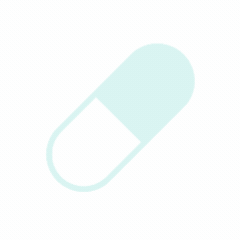Drug updated on 12/11/2024
| Dosage Form | Film-coated tablet (oral: 10 mg); Chewable tablet (oral: 4 mg, 5 mg); Granule (oral, 4 mg) |
| Drug Class | Leukotriene receptor antagonists |
| Ongoing and Completed Studies | ClinicalTrials.gov |
Indication
- Indicated for prophylaxis and chronic treatment of asthma in patients 12 months of age and older.
- Indicated for acute prevention of exercise-induced bronchoconstriction (EIB) in patients 6 years of age and older.
- Indicated for relief of symptoms of allergic rhinitis (AR): seasonal allergic rhinitis (SAR) in patients 2 years of age and older, and perennial allergic rhinitis (PAR) in patients 6 months of age and older.
Latest News

Summary
- This summary is based on the review of seven systematic review(s)/meta-analysis(es). [1-7]
- In children with cough variant asthma (CVA), combination therapy with montelukast and other drugs (e.g., budesonide, fluticasone propionate) significantly improved effective rate (relative risk (RR) = 1.23, 95% confidence interval (CI): 1.18-1.29, p < .001) and respiratory function measures, including peak expiratory flow (PEF) (standardized mean difference (SMD) = 1.69), forced vital capacity (FVC) (SMD = 1.67), forced expiratory volume in 1 second (FEV₁) (SMD = 1.74), and FEV₁/FVC ratio (SMD = 1.84), all with p < .001.
- In adults with CVA, montelukast as an adjunct therapy increased the total effective rate (RR = 1.20, 95% CI: 1.13-1.27, p < .01) and improved FEV₁% (SMD = 0.91), PEF% (SMD = 0.63), FEV₁ (SMD = 1.15), PEF (SMD = 0.64), and FEV₁/FVC% (SMD = 0.76), while also reducing recurrence rate (RR = 0.28).
- In treating allergic rhinitis, a loratadine-montelukast combination reduced total nasal symptom scores (SMD = -1.00 vs. loratadine; SMD = -0.46 vs. montelukast; SMD = -0.93 vs. placebo), with additional improvements in nasal congestion, itching, sneezing, and rhinoconjunctivitis-related quality of life.
- For CVA in children, there was no statistically significant difference in adverse reaction incidence between the combined treatment group and control (RR = 0.65, 95% CI: 0.42-1.02, p = .060).
- In CVA in adults, the montelukast auxiliary group showed a higher incidence of adverse reactions than the control group, though not statistically significant (RR = 1.32, 95% CI: 0.89, 1.96, p = 0.17).
- Pediatric studies demonstrated significant effectiveness of combination therapies with montelukast in improving respiratory outcomes for children with CVA, asthma, and allergic rhinitis. For adults with CVA, montelukast as adjuvant therapy enhanced asthma control. In children and adolescents, SFC was superior to montelukast or montelukast-fluticasone in managing asthma; nebulized corticosteroids were effective and well tolerated in young children.
Product Monograph / Prescribing Information
| Document Title | Year | Source |
|---|---|---|
| Singulair (montelukast sodium) Prescribing Information. | 2021 | Merck & Co., Inc., Rahway, NJ |
Systematic Reviews / Meta-Analyses
Clinical Practice Guidelines
| Document Title | Year | Source |
|---|---|---|
| 2022 GINA report, global strategy for asthma management and prevention. | 2022 | GINA |
| Asthma guideline updates. | 2022 | ACSAP: Pulmonary Care |

